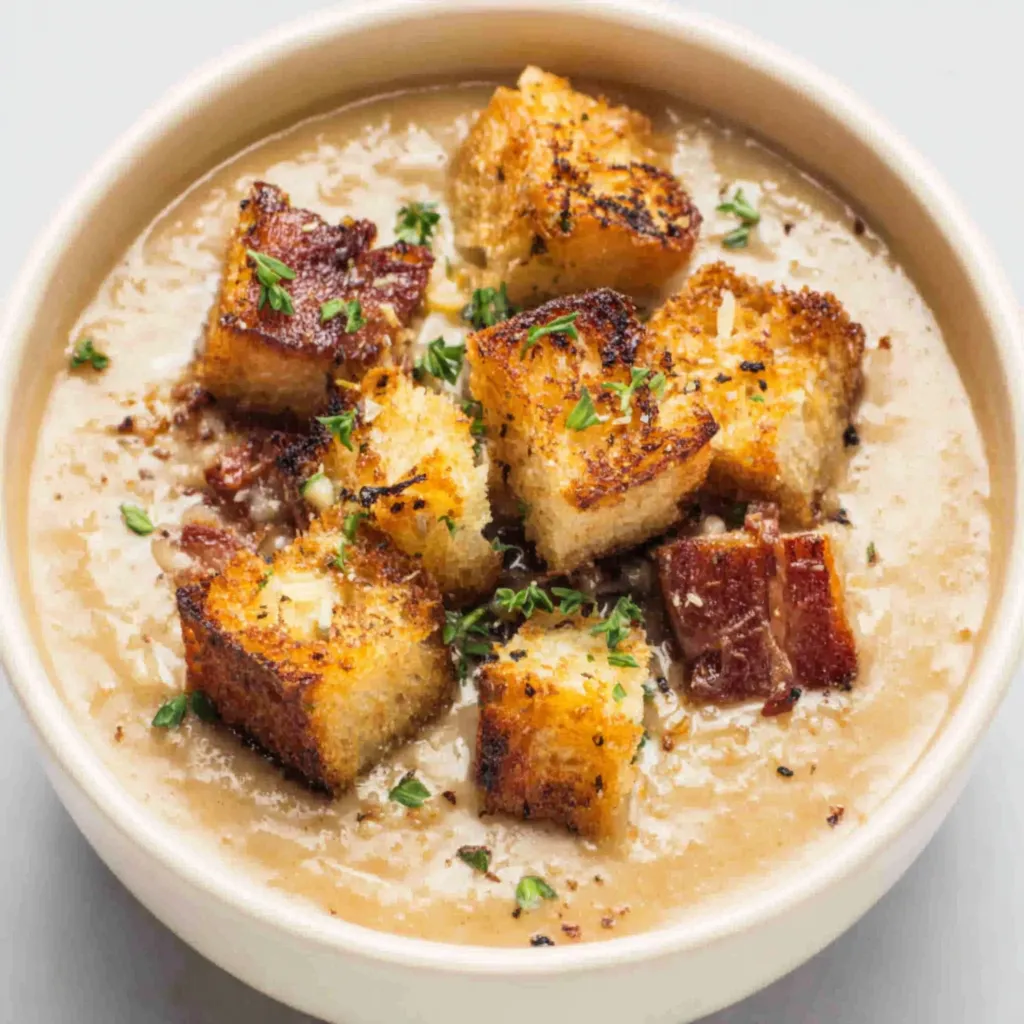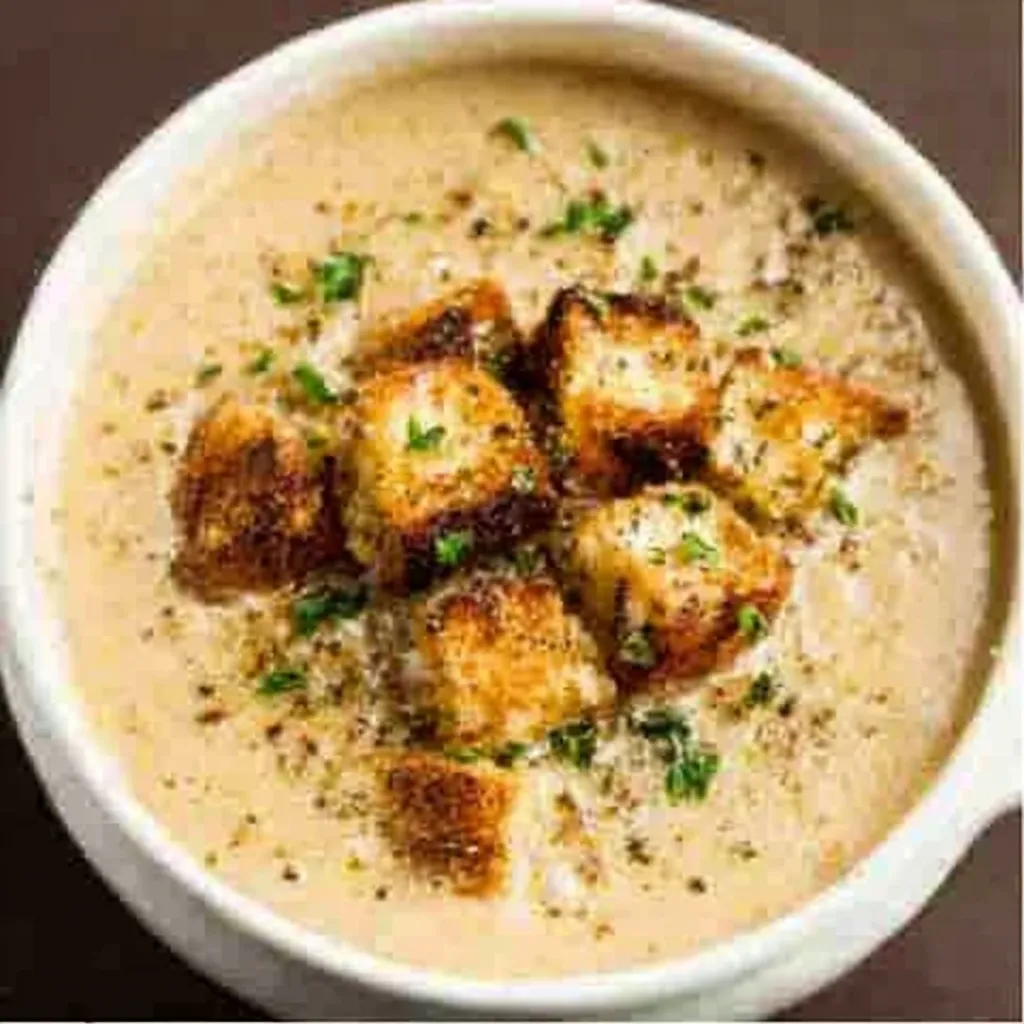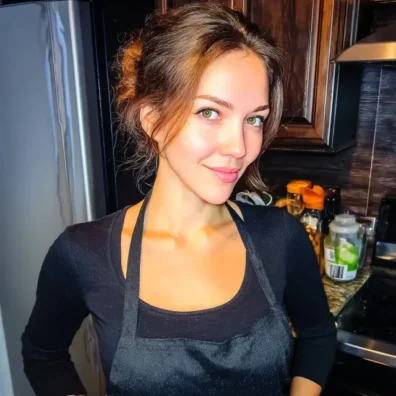Roasted garlic soup: how do you transform a humble bulb into a bowl of creamy, deeply flavored comfort?
The Alchemical Transformation: Garlic Under Fire

The magic of roasted garlic lies in the Maillard reaction, a chemical process between amino acids and reducing sugars that gives browned food its distinctive flavor. Raw garlic is pungent and sharp due to the presence of allicin. When heated, allicin breaks down into milder, sweeter-tasting compounds. Roasting not only mellows the harshness but also coaxes out a nutty sweetness that’s simply unattainable through other cooking methods. Think of it like this: applying gentle, consistent heat transforms the sulfurous compounds into something akin to caramel, deepening the complexity. This is further enhanced by the presence of even a small amount of oil, as it aids in the efficient transfer of heat, ensuring even browning and preventing burning. The result is a flavor profile that is simultaneously rich, savory, and subtly sweet, perfect for forming the backbone of a delicious soup.
The Recipe: Liquid Gold
Here’s my go-to recipe for Perfect Roasted Garlic Soup. I’ve tweaked it over the years to achieve the absolute best flavor and texture.
Ingredients:
- 4 heads of garlic
- 2 tablespoons olive oil, plus extra for drizzling
- 1 large yellow onion, chopped
- 2 carrots, chopped
- 2 celery stalks, chopped
- 6 cups vegetable broth (or chicken broth for a richer flavor)
- 1 cup heavy cream (optional, for extra creaminess)
- 1 teaspoon dried thyme
- 1/2 teaspoon dried rosemary
- Salt and freshly ground black pepper to taste
- Fresh parsley, chopped, for garnish
Equipment:
- Baking sheet
- Large soup pot or Dutch oven
- Immersion blender or regular blender
Instructions:
- Roast the Garlic: Preheat oven to 400°F (200°C). Slice the tops off the garlic heads, exposing the cloves. Drizzle with olive oil, wrap each head in foil, and roast for 45-60 minutes, or until the cloves are soft and easily squeezed out. Let cool slightly.
- Sauté the Vegetables: While the garlic is roasting, heat 2 tablespoons of olive oil in a large soup pot or Dutch oven over medium heat. Add the onion, carrots, and celery and cook until softened, about 8-10 minutes.
- Add Garlic and Broth: Squeeze the roasted garlic cloves into the pot. Add the vegetable broth, thyme, and rosemary. Bring to a boil, then reduce heat and simmer for 15-20 minutes, allowing the flavors to meld.
- Blend the Soup: Use an immersion blender to blend the soup until smooth. Alternatively, carefully transfer the soup to a regular blender (in batches, if necessary) and blend until smooth.
- Finish and Serve: Return the soup to the pot. Stir in the heavy cream (if using) and season with salt and pepper to taste. Heat through gently, but do not boil. Serve hot, garnished with fresh parsley.
My Odyssey: The Roasted Garlic Soup Saga
The Initial Stumbles: Acrid Aromas and Bitter Bites
My first few attempts were a disaster. I envisioned a creamy, dreamy soup, but I kept ending up with something that tasted overwhelmingly bitter. Like many of you, I initially thought the problem was the garlic itself. I tried different varieties, thinking some were inherently more bitter than others. I even considered blanching the garlic before roasting, a step I now know is completely unnecessary. The first time I made a Crock Pot Crack Potato Soup, the garlic flavor was amazing. Why couldn’t I replicate that in the roasted garlic soup?
The ‘Aha!’ Moment: Temperature is Key
Then, I had an ‘Aha!’ moment. I realized the issue wasn’t the type of garlic, but the *way* I was roasting it. I was impatient and cranked up the oven temperature, hoping to speed up the process. Big mistake! High heat caused the garlic to burn, resulting in that unpleasant bitterness. Lowering the temperature and roasting the garlic for a longer period made all the difference. This is a similar concept to what you need to consider when making Creamy Reuben Soup, as you need to make sure you don’t scorch the corned beef.
Broth Selection: Finding the Right Foundation
Another crucial factor was the broth. Initially, I used water, thinking the roasted garlic would provide enough flavor. The result was bland and lifeless. Switching to vegetable broth added depth and complexity. Chicken broth also works well, especially if you’re not vegetarian, providing a richer, more savory base. Experimenting with different broths, like trying to add the complexity found in a Cheddar Garlic Herb Potato Soup, can change the entire character of the soup.
The Cream Conundrum: To Add or Not to Add?
Finally, there’s the question of cream. While the soup is delicious without it, adding a touch of heavy cream elevates it to another level. It creates a luxurious, velvety texture and mellows the garlic’s sharpness even further. However, if you’re looking for a lighter option, you can skip the cream altogether or use a plant-based alternative like cashew cream or coconut milk. It all depends on your personal preference and dietary needs. Sometimes, though, you just want something as decadent as Creamy Garlic Parmesan Crockpot Chicken & Potatoes, and that calls for cream.
The Foolproof Technique: A Symphony of Simplicity
Here’s a summarized, foolproof method for crafting the perfect roasted garlic soup:
- Roast Low and Slow: Roast garlic heads at 400°F (200°C) for 45-60 minutes, or until soft and easily squeezed out. This prevents burning and bitterness.
- Sauté with Patience: Sauté the onions, carrots, and celery until softened before adding the garlic. This creates a flavorful base for the soup.
- Broth is Boss: Use vegetable or chicken broth for a richer, more complex flavor. Water simply won’t cut it.
- Simmer to Meld: Simmer the soup for at least 15 minutes after adding the broth and garlic to allow the flavors to meld.
- Blend with Care: Blend the soup until smooth using an immersion blender or a regular blender (in batches). Be careful when blending hot liquids.
- Cream it Up (Optional): Add heavy cream for a luxurious texture and milder flavor. Alternatively, use a plant-based cream or skip it altogether.
- Season with Love: Season generously with salt and pepper to taste. Fresh herbs like parsley make a lovely garnish. Don’t be afraid to experiment with other seasonings to create something as comforting as Garlic Butter Potato Perfection or as flavorful as Garlic Chickpea Soup.
Why is roasting the garlic so important for this soup?
Roasting the garlic mellows its harshness and coaxes out a nutty sweetness that’s unattainable through other cooking methods. It transforms sulfurous compounds into something akin to caramel, deepening the flavor complexity.
What can I do if my roasted garlic soup tastes bitter?
The article suggests that bitterness is often caused by roasting the garlic at too high a temperature. Lowering the temperature and roasting for a longer period should prevent burning and bitterness.
Is it necessary to add cream to the roasted garlic soup?
No, adding cream is optional. While it adds a luxurious texture and mellows the garlic’s sharpness, you can skip it altogether for a lighter option or use a plant-based alternative like cashew cream or coconut milk.
What kind of broth is best for roasted garlic soup?
Vegetable broth or chicken broth are recommended for a richer, more complex flavor. Using water alone will result in a bland and lifeless soup.

Perfect Roasted Garlic Soup
Ingredients
Equipment
Method
- Preheat oven to 400°F (200°C).
- Slice the tops off the garlic heads, exposing the cloves.
- Drizzle with olive oil, wrap each head in foil.
- Roast for 45-60 minutes, or until the cloves are soft and easily squeezed out. Let cool slightly.
- Heat 2 tablespoons of olive oil in a large soup pot or Dutch oven over medium heat.
- Add the onion, carrots, and celery and cook until softened, about 8-10 minutes.
- Squeeze the roasted garlic cloves into the pot.
- Add the vegetable broth, thyme, and rosemary.
- Bring to a boil, then reduce heat and simmer for 15-20 minutes, allowing the flavors to meld.
- Use an immersion blender to blend the soup until smooth. Alternatively, carefully transfer the soup to a regular blender (in batches, if necessary) and blend until smooth.
- Return the soup to the pot.
- Stir in the heavy cream (if using) and season with salt and pepper to taste.
- Heat through gently, but do not boil.
- Serve hot, garnished with fresh parsley.




